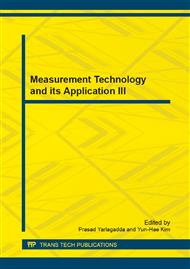p.90
p.96
p.100
p.106
p.114
p.121
p.126
p.131
p.137
The Research of GPS Elevation Fitting Considering the Influence of Covariance Function
Abstract:
The common method to determine Quasi-Geoids is GPS leveling however the Quasi-Geoid of this method determined is a kind of trend surface which not take the physical property of geoid into consideration, and the fitting method is surface fitting which only consider the surveying error, lead to inaccurate fitting result. In allusion to these problems, Remove-restore method is used to remove the long wave information of earth gravity field model to get more smooth residual gravity height anomaly, then compared the influence of different covariance function to the fitting result of least square collocation which take surveying error and model error into account. The results show that Gaussian and resemble Gaussian function can achieve higher fitting precision to the large area with height anomaly value changes significance; the Remove-restore method can effectively improve the fitting precision to least square collocation method which depend on the covariance value of each points.
Info:
Periodical:
Pages:
114-120
Citation:
Online since:
June 2014
Authors:
Price:
Сopyright:
© 2014 Trans Tech Publications Ltd. All Rights Reserved
Share:
Citation:


